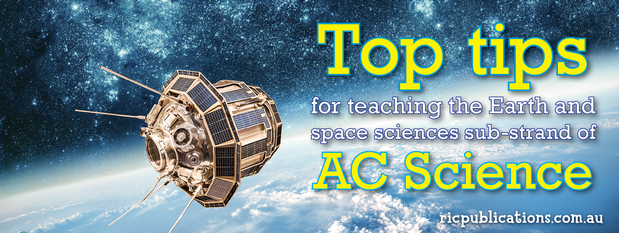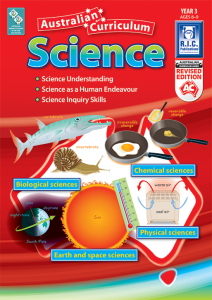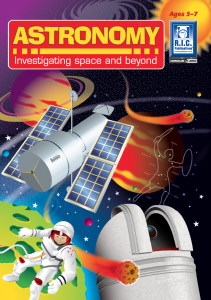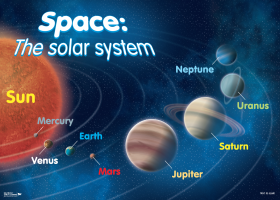- Tuesday 02 May 2017
- 0 Comments
Finding it hard to incorporate earth and space sciences in the classroom? Here are some easy tips to get your students interested in learning in all different ways!
A lot of teachers don't like teaching science. (That's quite understandable in my opinion.) They consider themselves lucky if a peer wants to teach science across the grade or school. My advice is 'Don't be afraid! Just have a go!' You don't know what you can do until you try it.
Make science as hands-on as possible and FUN! This will get the students in every time! Activities can include making a model, doing an experiment, discussing with others—it's all hands-on. Keep students actively involved. Try this great craft model that can be downloaded free here.
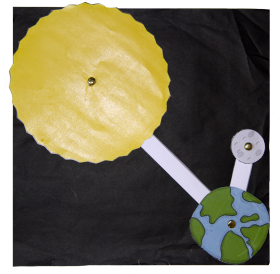 Be a facilitator, not a 'know-it-all'! It's not your job to know everything. Help the children develop their inquiry skills. Be a questioner and director. Direct and assist by asking questions, but let the kids follow their own path of discovery. The knowledge and skills they learn will be much more relevant and useful in the long run. This doesn't mean you don't do your homework about a science topic—of course you do! But kids have a bad habit of asking tricky or unusual questions. Just lead them in the right—another classmate, a science text or research site perhaps?
Be a facilitator, not a 'know-it-all'! It's not your job to know everything. Help the children develop their inquiry skills. Be a questioner and director. Direct and assist by asking questions, but let the kids follow their own path of discovery. The knowledge and skills they learn will be much more relevant and useful in the long run. This doesn't mean you don't do your homework about a science topic—of course you do! But kids have a bad habit of asking tricky or unusual questions. Just lead them in the right—another classmate, a science text or research site perhaps?
Talk to an expert. Other teachers on the staff may be more knowledgeable than you about science topics, so seek their assistance. Most are only too willing to help. If timetables allow, observe a few of their science lessons if you can.
Be as well-prepared as you can. Make sure you have all your materials, equipment, lesson plan and extra work for early finishers for each science lesson. You could assign 'monitors' to clean up while others get on with additional work. A quiet experiment recording worksheet, relevant science reading materials or a concept-confirming science video will help settle the kids after an active, hands-on science lesson.
Be prepared for noise and mess! IF there are experiments, hands-on activities and students are working in groups, noise and mess are unavoidable. Get used to it! Over time, students will et better at working in this way (and you'll get used to the noise and mess).
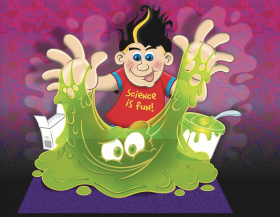 Have students help you to work out what experiments should be done and how to do them. They will take greater ownership of activities and develop a deeper understanding of the concepts if they are actively involved.
Have students help you to work out what experiments should be done and how to do them. They will take greater ownership of activities and develop a deeper understanding of the concepts if they are actively involved.
Relate science to the students' everyday life. If it's relevant to them, they will remember the concept.
Use the right lingo! Students love new and unusual vocabulary. Using the correct terminology will make them feel very adult. (They have to learn it later on, so the sooner the better.) Terminology just needs to be explained properly and clearly.
Students love technology, so include it in science lessons. Not as fun as making elephant toothpaste, of course, but children are so immersed in technology these days they won't realise they're learning science concepts until it's too late!
 Give Year 5 students this technology link so they can create an interesting model showing the relative sizes of the planets in the solar system. There's also a good link to a text with a table of the relative sizes and colours of the planets here. There's also a free download of the table for the kids in both centimetres and inches. Otherwise, try a fun model like this! Image credit: www.geekswithjuniors.com
Give Year 5 students this technology link so they can create an interesting model showing the relative sizes of the planets in the solar system. There's also a good link to a text with a table of the relative sizes and colours of the planets here. There's also a free download of the table for the kids in both centimetres and inches. Otherwise, try a fun model like this! Image credit: www.geekswithjuniors.com
Looking for science resources? View our amazing science series here.
